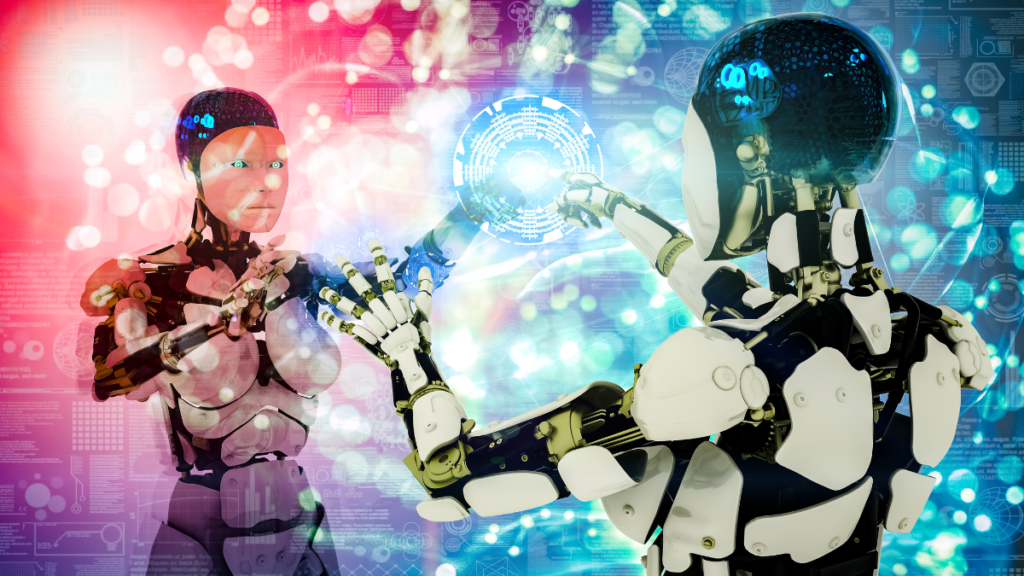You’ve been staring at the screen for too long. The cursor blinks like it’s mocking you. The idea was there—sort of—but now it’s buried under half-sentences and dead ends. The harder you push, the more elusive it feels.
So you step away. Stretch. Grab a coffee. Then you remember this little tool you’ve been meaning to try. Not something that spits out ready-made ideas, but something… different. It asks questions. It reshapes fragments. It suggests without insisting.
You feed it your half-thoughts, that messy paragraph you hate, a phrase that almost worked. And it responds—not with a solution, but with something that jolts you. A shift in tone. A different metaphor. A door you didn’t see before.
Suddenly, it’s not you versus the blank page anymore. It’s you in conversation—with something that listens just enough and nudges at the right time.
That’s when you realize: this isn’t automation. This is collaboration.
What makes it ‘regenerative’?
Most tools try to finish your sentence for you. This one asks if the sentence even needs to be written.
Regenerative AI doesn’t just generate—it reflects, rewrites, rearranges, and questions. It acts more like a collaborator than a machine on autopilot. Instead of flooding you with outputs, it pauses. It responds. It learns your rhythm.
Think of it like a creative partner who’s not trying to impress you with flashy ideas, but who gently pokes at your assumptions. You write a rough paragraph; it hands it back, tilted slightly. Not better, just different—just enough to make you stop and reconsider.
Where traditional tools offer shortcuts, regenerative AI offers tension. The good kind. The kind that keeps creativity alive and moving.
This isn’t a prompt-and-receive transaction. It’s a loop. Your input shapes its suggestions, and its suggestions reshape your thinking. Over time, you’re not just making things—you’re rethinking how you make them.
Creativity isn’t a solo act anymore
There’s a strange comfort in working alone. No feedback, no interruptions—just you and the work. Until the silence turns into static and nothing quite feels right.
Now imagine having something that doesn’t interrupt, but responds. Not with an answer, but with a possibility.
Writers have started using regenerative AI to test different tones, reframe characters, or challenge stale metaphors. Designers use it to rearrange layouts they’ve been stuck on. Musicians feed in snippets of melody and watch new patterns emerge—not complete songs, but unexpected sparks.
It doesn’t override the vision. It adds friction in just the right places. That friction creates movement.
What’s happening isn’t replacement. It’s reflection. And suddenly, the once-isolated process starts to feel more like a dialogue—quiet, strange, and often surprising.
Where the magic happens: unexpected outcomes
There’s a kind of thrill in being caught off guard by your own work.
One filmmaker talked about feeding a broken storyline into a regenerative AI. Not for cleanup, but curiosity. The tool didn’t fix the plot—it offered a shift in perspective. A minor character’s voice suddenly became the center. The story took a turn no one saw coming—not even its creator.
These tools don’t polish your work into something finished. They make it strange again. And that’s often where creativity lives—in the unexpected, the imperfect, the “wait, what if…” moments.
It’s like having a second brain that’s not bound by your habits. One that sees the pieces from a different angle and isn’t afraid to make a mess.
You don’t always keep what it gives you. But you walk away seeing your work in a way you couldn’t have alone. That’s the magic.
Rethinking originality in a remix culture

No one creates in a vacuum. Every song carries echoes. Every sentence borrows a rhythm. Even the boldest ideas are stitched from threads that came before.
Regenerative AI doesn’t try to hide that. It thrives in it.
Instead of pretending to be original, it plays with what already exists. It combines. It stretches. It twists. It reflects the way we already create—pulling from memories, influences, scraps of things we forgot we knew.
Some see that as mimicry. But if we’re honest, so much of creativity is remix. What matters isn’t whether the spark is entirely new—it’s what you do with it.
These tools don’t hand you something finished. They feed the chaos. They give you fragments and flavors. You decide what becomes the final piece.
In a culture built on references and reimaginings, maybe originality isn’t the point. Maybe it’s what you make from the noise.
The real test: who’s in control?
There’s always a moment of hesitation. You wonder if you’re steering the creative process—or if the tool is steering you.
It’s a fair question.
When something starts offering ideas faster than you can process them, it’s tempting to just go with whatever works. But regenerative AI doesn’t push you that way. It nudges, questions, reframes. It’s not trying to take over. It’s asking for direction.
You still decide what’s worth keeping. You still set the tone, the rules, the feeling. And when the output feels off, you don’t blame the tool—you adjust your own approach.
Some creators say it’s helped them feel more in control. Like they’ve become editors of their own imagination, curators instead of just executors. That sense of authorship doesn’t go away—it gets sharper.
The tool might throw a hundred ideas at you. But you’re the one who says yes to the one that matters.
Beyond the buzz: why this could change everything
This isn’t about churning out faster drafts or cutting costs. That story’s been told too many times—and it misses the point entirely.
The real shift is happening deeper, inside the creative process itself.
People are starting to work differently. They’re listening more closely to their own instincts. They’re exploring detours they would’ve skipped. They’re creating not just for an outcome, but for discovery.
Regenerative AI opens up that space.
It turns creativity into an ongoing exchange—less like hitting a target, more like wandering through possibilities. It doesn’t flatten your style. It asks what else it could become.
And in that space, something changes. Not in the tool, but in you.
Creativity needs new questions, not just new tools
A lyric that didn’t work suddenly sings. A design you almost scrapped finds its spine. A paragraph you gave up on becomes the heart of the story.
Not because a machine “fixed” it. But because something nudged you to look again.
Regenerative AI isn’t here to replace imagination. It’s here to disrupt routine, to crack open the stuck parts, to ask better questions when you’ve run out of your own.
And maybe that’s what creativity has always needed—not a louder voice, but a thoughtful echo. Something that listens just enough. Challenges just enough. Stays out of the way when it should.
In the end, it’s still your hand on the brush. Your name on the spine. Your voice in the room.
But now, you’re not creating in silence. You’re creating in conversation.




